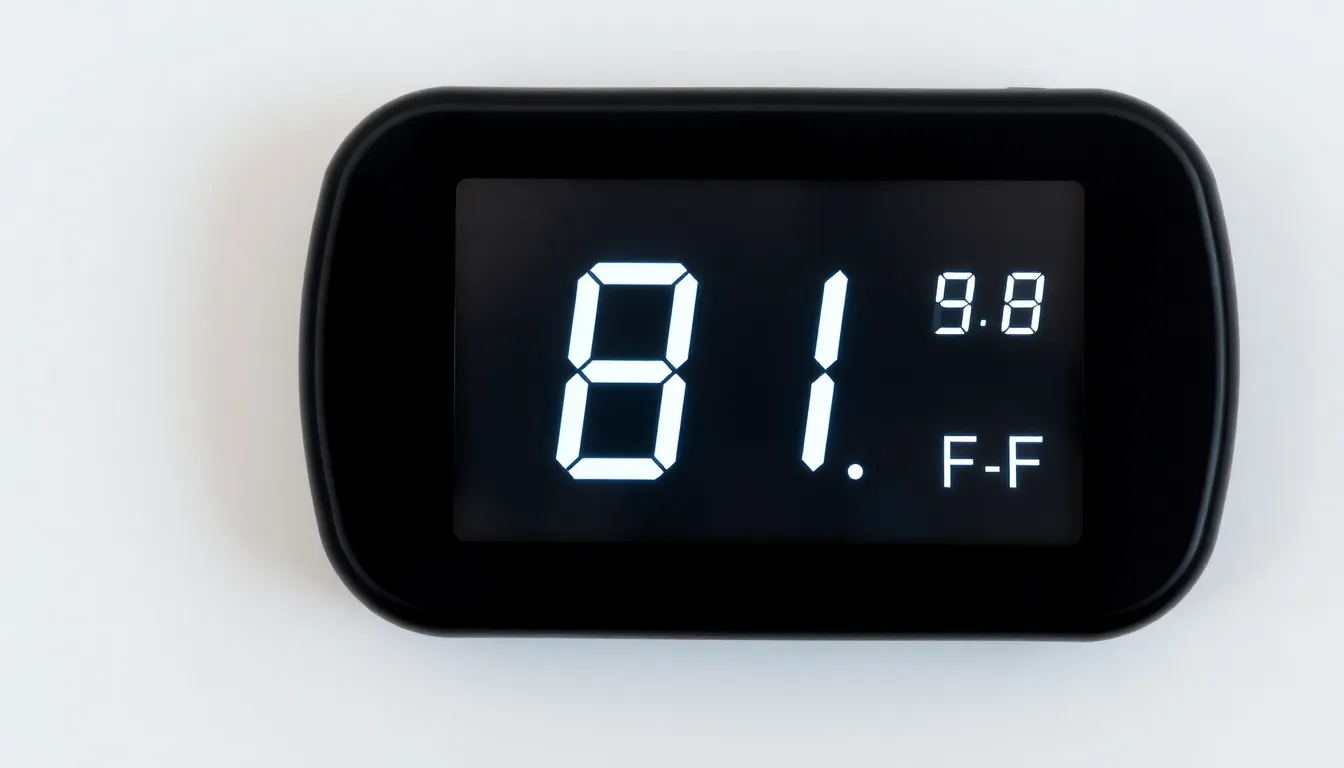Converting temperatures between Fahrenheit and Celsius can seem daunting, but it’s a skill everyone can master. With the world becoming increasingly interconnected, understanding these units is essential for travel, cooking, and everyday life.
When the temperature hits 81 degrees Fahrenheit, many wonder what that translates to in Celsius. This conversion not only helps in grasping weather forecasts but also in adjusting recipes or planning outdoor activities. Knowing how to make this conversion can enhance one’s understanding of global temperatures and climate discussions.
In this article, we’ll break down the conversion process and explore why it matters in today’s world. Whether you’re a seasoned traveler or just curious about temperature scales, this guide will provide the clarity needed to navigate Fahrenheit and Celsius with ease.
Table of Contents
ToggleUnderstanding Temperature Conversion
Temperature conversion plays a critical role in everyday activities. Understanding how to switch between Fahrenheit and Celsius enhances one’s ability to navigate various contexts, such as travel and cooking.
The Importance of Temperature Conversion
Temperature conversion matters for several reasons. Accurate temperature knowledge helps in preparing meals correctly at specific temperatures. For example, a recipe may specify 350 degrees Fahrenheit, which translates to approximately 175 degrees Celsius. In travel, familiarizing oneself with local temperatures improves comfort and preparedness. Weather forecasts also rely on these conversions, making it essential for effective communication about climate.
Common Temperature Scales
Common temperature scales include Fahrenheit (°F) and Celsius (°C). Fahrenheit is primarily used in the United States and a few Caribbean nations, while Celsius dominates most of the world.
| Scale | Water Freezes | Water Boils | Common Uses |
|---|---|---|---|
| Fahrenheit | 32°F | 212°F | United States, Caribbean |
| Celsius | 0°C | 100°C | Most countries, scientific use |
Understanding these scales aids in grasping global weather discussions and contributes to better comprehension of environmental data.
Converting 81 Degrees F to C

Converting 81 degrees Fahrenheit to Celsius requires a simple formula. Understanding this formula and the calculation process ensures accurate temperature conversions.
The Formula for Conversion
The formula for converting Fahrenheit (F) to Celsius (C) is:
[ C = frac{(F – 32) times 5}{9} ]
In this equation, subtract 32 from the Fahrenheit temperature, multiply the result by 5, and then divide by 9. This method provides a precise Celsius value.
Step-by-Step Calculation
- Subtract 32: Start by subtracting 32 from 81.
- ( 81 – 32 = 49 )
- Multiply by 5: Multiply the result by 5.
- ( 49 times 5 = 245 )
- Divide by 9: Divide the product by 9 for the final Celsius value.
- ( frac{245}{9} approx 27.22 )
81 degrees Fahrenheit converts to approximately 27.22 degrees Celsius.
Practical Applications of 81 Degrees F to C
Understanding the conversion of 81 degrees Fahrenheit to Celsius serves various practical purposes. Familiarity with this conversion aids in multiple daily scenarios and industries.
Everyday Scenarios
Cooking, gardening, and outdoor activities often require temperature awareness. Many recipes use Fahrenheit, making conversion crucial for those following Celsius-based instructions. For example, when a recipe calls for 27 degrees Celsius, knowing it corresponds to 81 degrees Fahrenheit ensures better meal preparation and cooking accuracy. Also, gardeners may monitor temperatures in Celsius, highlighting the need for conversion when assessing weather conditions for plant growth.
Travelers frequently encounter temperature changes in different regions. Awareness of various temperature scales enhances comfort and informs clothing choices. For instance, knowing 81 degrees Fahrenheit translates to roughly 27.22 degrees Celsius helps predict warmth and humidity in tropical destinations. This knowledge allows for packing appropriate attire and planning suitable activities.
Importance in Different Industries
In the healthcare industry, temperature plays a vital role. Medical equipment often uses Celsius for temperature readings. Understanding the conversion from Fahrenheit ensures accurate monitoring for patient care. A nurse interpreting a reading of 81 degrees Fahrenheit must recognize it as approximately 27.22 degrees Celsius to provide appropriate treatments.
The agriculture sector relies on accurate temperature readings for crop management and livestock health. Converting temperatures supports farmers in optimizing growing conditions and maintaining animal welfare. When local climate data cites temperatures in Celsius, knowing that 81 degrees Fahrenheit equals 27.22 degrees Celsius aids decision-making on irrigation schedules and harvesting times.
In the construction industry, temperature influences material performance. For example, certain paints and coatings have optimal application temperatures specified in Celsius. Understanding that 81 degrees Fahrenheit translates to 27.22 degrees Celsius ensures proper application conditions are met, helping maintain quality and durability of construction materials.
Common Misconceptions
Several misconceptions exist regarding temperature conversions, particularly between Fahrenheit and Celsius. Understanding these can enhance clarity in everyday discussions about temperature.
Understanding Temperature Differences
A common belief states Celsius and Fahrenheit are equal at certain points, which isn’t accurate. The two scales contain different starting points and increments, leading to varying temperature readings. For example, 0 degrees Celsius represents the freezing point of water, while 32 degrees Fahrenheit marks the same event. Misunderstandings can arise from assuming a direct correlation between these scales. Recognizing that 81 degrees Fahrenheit equals approximately 27.22 degrees Celsius clarifies this example.
Clarifying Temperature Ranges
Another misconception concerns the perception of temperature bands. Many people think that every degree deviation in Fahrenheit has the same impact as in Celsius, but this isn’t true. A 1-degree change in Fahrenheit equates to roughly 0.56 degrees in Celsius. Therefore, when discussing temperature differences, it’s crucial to contextualize changes accurately. For instance, a range of 80-90 degrees Fahrenheit may seem small, but it spans 26.67 to 32.22 degrees Celsius, illustrating the necessity for precise temperature awareness across both scales.
Mastering temperature conversions like 81 degrees Fahrenheit to Celsius is essential for navigating everyday life. Whether it’s planning a trip or preparing a meal understanding these scales enhances comfort and accuracy. With 81 degrees Fahrenheit equating to approximately 27.22 degrees Celsius individuals can make informed decisions based on regional climates and cooking requirements.
This knowledge not only aids in personal activities but also plays a critical role in various industries. From healthcare to agriculture and construction accurate temperature awareness is vital. By grasping these conversions people can improve their communication and engagement with global temperature discussions. Embracing this skill opens doors to a deeper understanding of the world around them.



